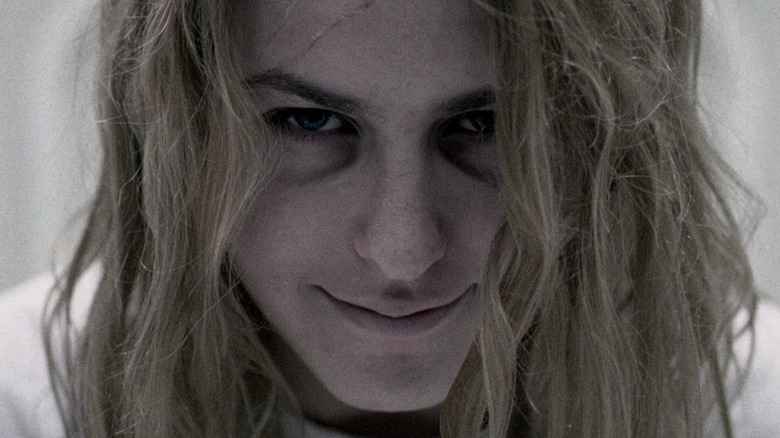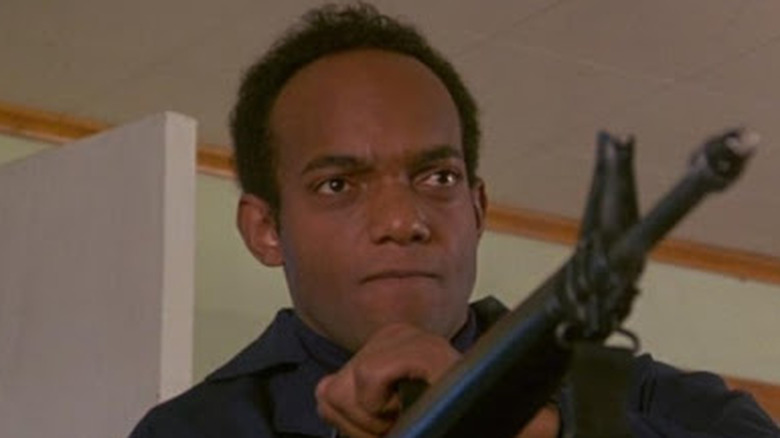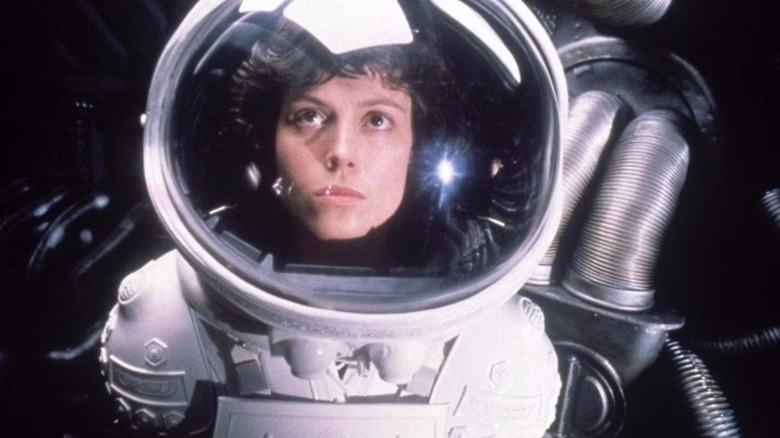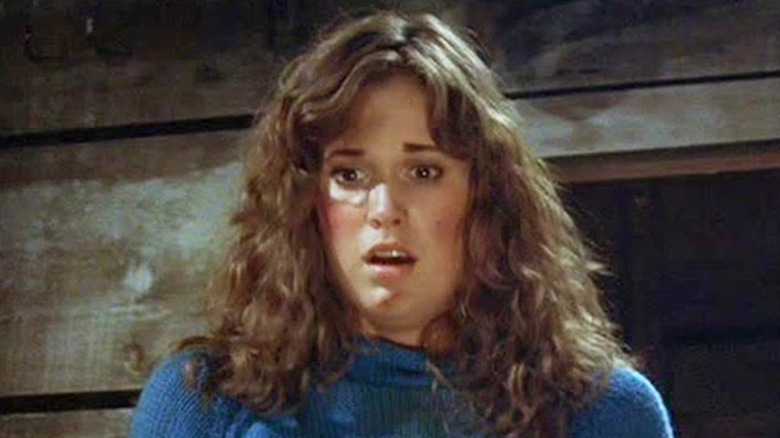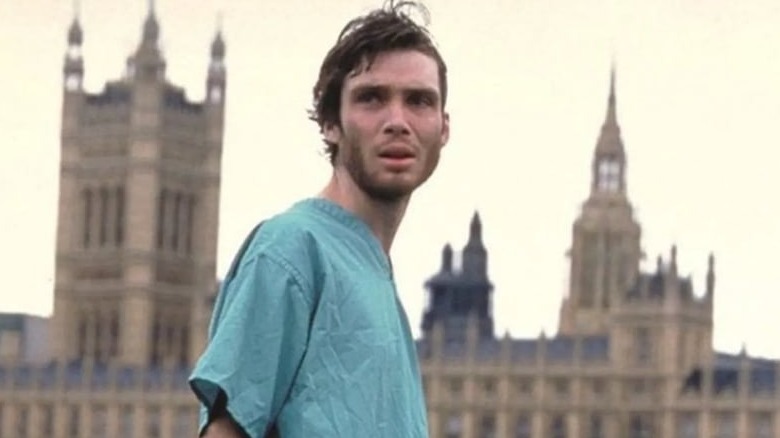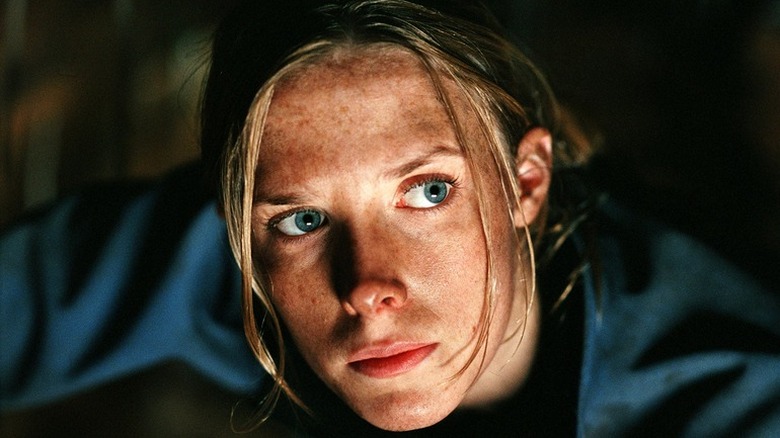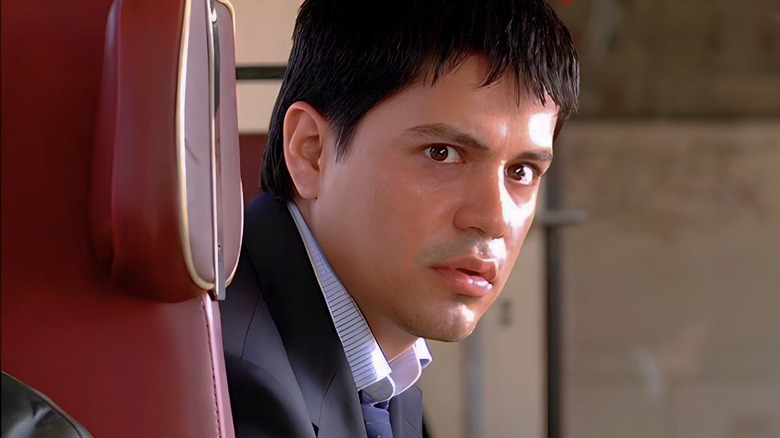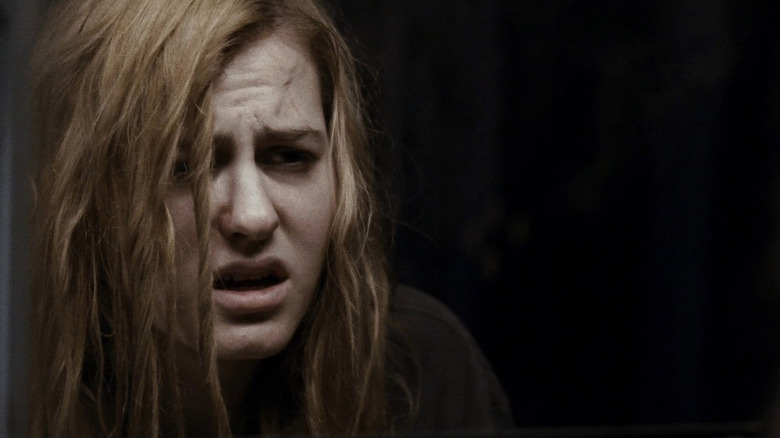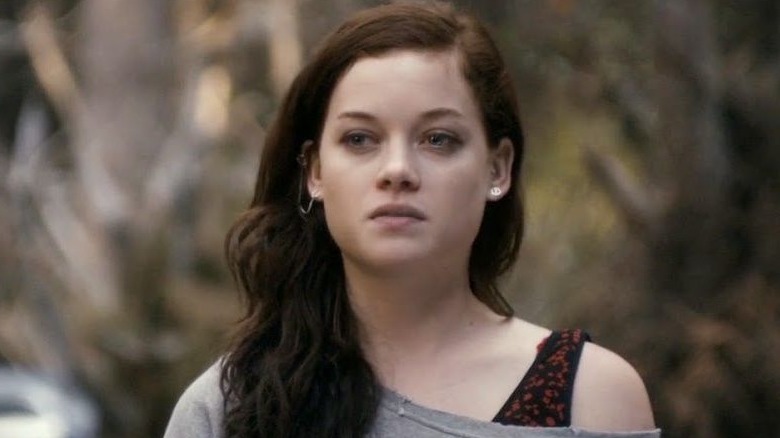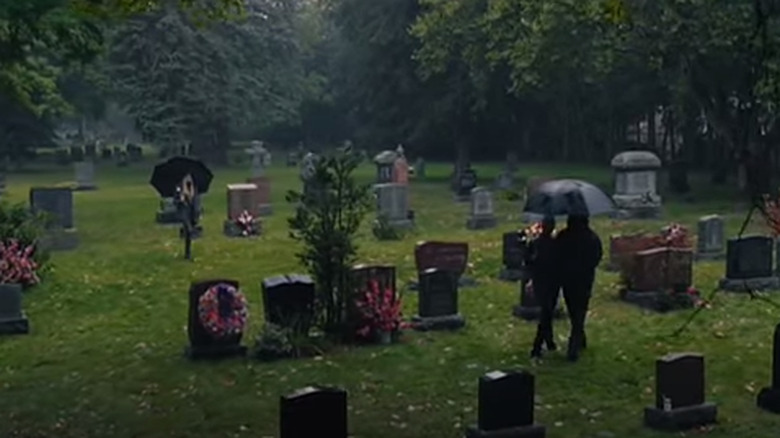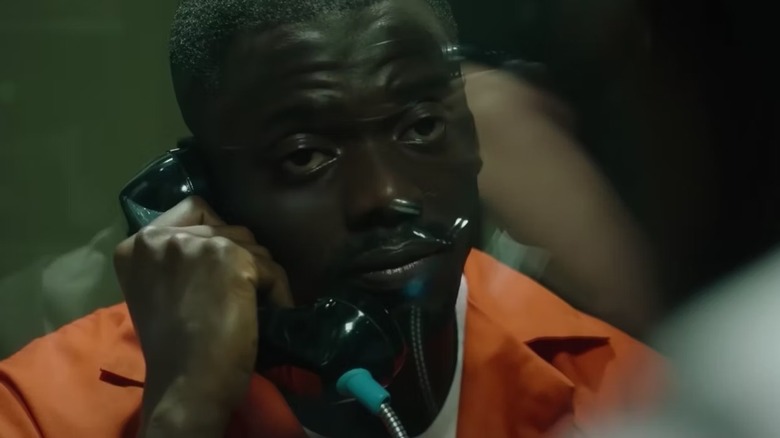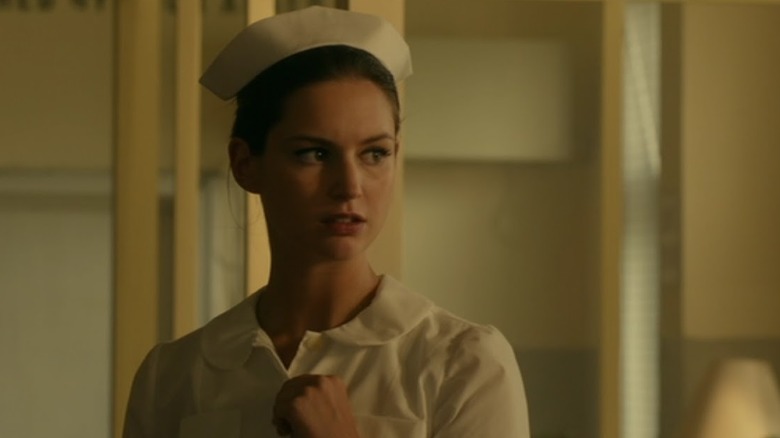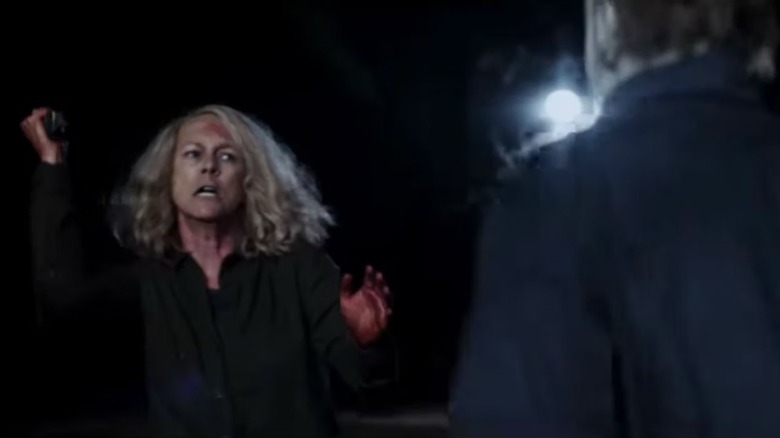Horror Movie Alternate Endings More Brutal Than The Real Ones
Horror movies are known for bringing terror and violence, but even they have limits on their on-screen brutality and grim tones. More than just cutting content to avoid harsher ratings and overly putting off audiences, horror movies will occasionally change their entire endings. From not being consistent with the tone of the rest of the movie to going too far with its graphic content, these alternate endings are often major departures that would have changed everything. Even the biggest horror classics and established franchises see these big changes, altering endings for a variety of reasons in post-production.
With that in mind, we've rounded up some of the biggest horror movies with alternate endings that were more brutal than the ones included with their respective theatrical cuts. These planned endings each went a step too far with their content and tone, which is why each of them were ultimately cut. You'll have to decide whether the right decision was made or not.
No one survived Dawn of the Dead (1978)
After essentially creating the modern zombie sub-genre with 1968's "Night of the Living Dead," filmmaker George Romero followed it up with his ambitious masterpiece, "Dawn of the Dead." The 1978 movie has a small group of survivors seek refuge in a Pennsylvania shopping mall as civilization collapses in the face of an escalating zombie apocalypse. This safe haven is overturned when a group of raiders invade the mall, allowing the undead hordes to pour inside. The last two survivors, Peter (Ken Foree) and Fran (Gaylen Ross), barely escape, flying away in a helicopter with low fuel towards an uncertain future.
Originally, Romero didn't want any of the main characters to survive their ordeal in the mall, scripting an ending where Peter and Fran kill themselves separately in their despair. Peter was to have shot himself while Fran would have stuck her head in the helicopter's spinning rotors, decapitating herself. However, Romero was convinced by a producer not to go forward with such a bleak ending to "Dawn of the Dead," with the alternate ending never filmed. The fake head for the planned ending was repurposed during filming to instead serve as the head exploded during the SWAT raid at the start of the movie.
Everyone died in Alien
Few movies blend science fiction and horror as effectively as director Ridley Scott's 1979 masterpiece "Alien." A small space freighter responds to a distress signal, only for one of their crew to have an egg of a ravenous xenomorph implanted in him. After the xenomorph hatches and matures, it stalks the surviving crew one-by-one and kills most of them. Sole survivor Ellen Ripley (Sigourney Weaver) ejects the xenomorph from a small shuttle and destroys it with the shuttle's engines in the movie's theatrical ending.
Scott originally envisioned an ending to "Alien" where none of the crew survived, including Ripley, despite Weaver's iconic performance. In the "Alien" alternate ending, the xenomorph avoids getting ejected from the shuttle's airlock and decapitates Ripley. Demonstrating new abilities, the xenomorph records an audio log replicating the crew's voice before issuing another distress signal to lure new prey. Unhappy with Scott's plans, a visiting studio executive threatened to fire Scott if he killed off Ripley, leading to the theatrical ending.
Jason decapitated Chris in Friday the 13th Part III
It isn't until the third installment of the "Friday the 13th" that the franchise formula begins to take shape, including slasher Jason Voorhees (Richard Brooker) gaining his iconic mask. The 1982 film has Jason terrorize a group of young adults staying at a lake house by the infamous Crystal Lake, led by protagonist Chris (Dana Kimmell). Chris is the last survivor standing, subduing Jason by striking him with an ax before hallucinating that he and his mother are attacking her. Initially, the plan for "Friday the 13th Part III" was that it would end with no survivors left at all.
The alternate ending to "Friday the 13th Part III" reveals that not only is Chris' hallucination of Jason's survival true, but he has tracked her down yet again. Eager to pay back the woman who buried an ax into his head, Jason decapitates Chris with a stroke from his signature machete. Though special effects guru Stan Winston prepared effects for the scene, this ending was dropped for wrapping the movie on an overly downbeat note. Though the sequence was filmed, with a handful of stills surviving, the footage itself has never been released.
Jim sacrificed himself to save Frank in 28 Days Later
Decades before winning an Academy Award for his starring role in "Oppenheimer," Cillian Murphy starred in the 2002 British horror movie "28 Days Later," where an unclothed scene scared him more than the film's zombies. Directed by Danny Boyle and written by Alex Garland, the movie had Britain overrun by hordes of those infected by a virus reducing them mindlessly filled with murderous rage. Murphy plays a survivor named Jim, who manages to escape with his small group, excluding single father Frank (Brendan Gleeson), who was infected and shot by the military. There are a number of alternate endings to "28 Days Later," changing if and how Jim survives his ordeal in Britain.
Among the most drastically different alternate endings is one that has Jim sacrifice himself to restore Frank's sanity and keep him with his daughter (Megan Burns). Frank is restrained while Jim undergoes a full blood transfusion to replace Frank's tainted blood with his own clean blood, killing Jim in the process. Included with the home video release of "28 Days Later," the planned ending never made it past the animatic stage. In his commentary of the alternate ending, Boyle explains that the proposed way to save Frank was too absurd and dropped.
Sarah had a different illusion in The Descent
"The Descent" is one of the greatest horror movies to come out of the United Kingdom, blending creature feature scares with claustrophobic tension. The 2005 movie has a group of women go spelunking in a remote and extensive cave system in North Carolina. As the women get lost in the vast underground networks of caverns, they are attacked by carnivorous subterranean creatures who relentlessly hunt them. In the U.S. theatrical ending, sole survivor, Sarah (Shauna MacDonald), sees a vision of Juno (Natalie Mendoza), the woman she left behind to die, before regaining her senses.
The original British version of "The Descent" and unrated cut released on home video in America goes one step further with Sarah's hallucinations. Rather than coming back to lucidity safely outside the caves, Sarah suffers from an illusion within an illusion, still lost underground. Sarah has a follow-up hallucination, imagining she is reunited with her late daughter (Molly Kayll) as the monsters rapidly approach her. The U.S. ending was an edit requested by its American distributor, Lionsgate, to make the movie less bleak, with filmmaker Neil Marshall obliging the request.
Paxton took a hostage in Hostel (2005)
Filmmaker Eli Roth's 2005 film "Hostel" attained notoriety upon release for its gruesome torture scenes of hapless tourists being mutilated by rich sadists. After escaping his captors, American college student Paxton Rodriguez (Jay Hernandez) hunts down an unnamed Dutch businessman (Jan Vlasák), who paid generously to brutally murder Paxton's friend. The theatrical ending has Paxton tail the killer to a public bathroom where he tortures and murders him in revenge. However, even a movie as infamous as "Hostel" has an alternate ending that went in an even darker direction.
The alternate ending, which was filmed and has since been released online, has Paxton stalk the Dutch murderer but stop short of confronting him in the bathroom. Instead, Paxton kidnaps the man's daughter, leaving the bewildered businessman panicked and searching for his daughter at the train station. As Paxton grimly rides away on a train with the Dutchman's visibly terrified daughter, he clearly has his own vengeful designs in mind for her. Test audiences found the clear child endangerment to be a step too far, and this ending was ultimately replaced.
Laurie would have been killed in Halloween II (2009)
Filmmaker Rob Zombie got the chance to put his own spin on the "Halloween" franchise with a 2007 reboot and its 2009 direct sequel. "Halloween II" explored the familial connection between Laurie Strode (Scout Taylor-Compton) and masked killer Michael Myers (Tyler Mane). One year after Michael's infamous rampage in Haddonfield, Laurie's mental health deteriorates considerably, especially after she learns Michael is her long-lost brother. The theatrical ending has Laurie committed to a psychiatric ward after murdering Michael and wearing his mask, with Laurie receiving visions of their late mother (Sheri Moon Zombie).
In an alternate ending included with the director's cut of "Halloween II," features an even more tragic end for Laurie. After stabbing his psychiatrist Sam Loomis (Malcom McDowell), Michael is killed by the police while Laurie grabs his knife. Advancing on Loomis, Laurie is similarly shot down by the police, with her mother welcoming her into the afterlife. Though Laurie was never going to have a happy ending in Zombie's movies, the "Halloween II" director's cut goes in an especially dark direction.
Evil Dead (2013) echoed the original movie
While the "Evil Dead" franchise became known for balancing its gory horror with campy humor, the 2013 "Evil Dead" remake returned the series to its deadly serious roots. Following the template of the first two "Evil Dead" movies, a group of friends travel to a remote cabin in the woods. After uncovering an unholy tome known as the Necronomicon, the group accidentally unleashes evil forces that possess them and cause them to murderously turn on each other. The sole survivor is Mia (Jane Levy), who separates from her demonic doppelganger and destroys her with a chainsaw in a torrent of blood.
Filmmaker Fede Álvarez originally had a darker ending planned for Mia, who was to be attacked by an unseen malevolent force while riding in the back of a pickup truck. The scene was an homage to the original "Evil Dead," which concluded similarly for its protagonist Ash (Bruce Campbell). Álvarez went as far to script an ending where the force that overtakes Mia causes her to explode in a gory mess. Ultimately, producer and "Evil Dead" creator Sam Raimi felt that Mia deserved a relatively happy ending, resulting in her survival at the end of the movie.
Another fake out ending in Carrie (2013)
The 1976 "Carrie" is a horror classic and the first on-screen Stephen King adaptation, telling the tragic story of troubled telekinetic teenager Carrie (Sissy Spacek). For what it's worth, King actually thinks the movie is better than his novel. The original movie ends with Carrie's friend Sue (Amy Irving) visiting Carrie's destroyed home, only to be startled by Carrie's bloody hand bursting from the rubble and grabbing her. The 2013 remake, starring Chloë Grace Moretz as Carrie and Gabriella Wilde as Sue, retains the broad strokes of the 1976 film's ending. After Sue visits Carrie's grave, the headstone cracks and Carrie's furious scream is heard, hinting at her vengeance from beyond the grave.
But the 2013 "Carrie" filmed an alternate ending that replaced the cemetery visit seen in the movie's theatrical cut. Instead, Sue, who Carrie spared after sensing she was pregnant, goes into labor at a local hospital to deliver her baby. As Sue realizes something is going horribly wrong, Carrie's bloody arm bursts her womb and grabs Sue before it cuts to Sue waking from a nightmare. Though echoing the 1976's fake-out conclusion, the 2013 "Carrie" remake would've veered into full body horror if it retained this alternate ending.
Chris went to prison in Get Out
After spending years making award-winning comedy, including a hilarious riff on "Gremlins 2," filmmaker Jordan Peele pivoted to horror with the Academy Award-winning 2017 movie "Get Out." A young Black man named Chris (Daniel Kaluuya) visits the family of his white girlfriend Rose (Allison Williams) in upstate New York. Chris learns that this odd small town implants the minds of its white residents in the bodies of their Black victims, giving themselves a form of immortality. Chris manages to escape this community by killing Rose and her family before being rescued by his best friend Rod (Lil Rey Howery).
In the original ending, Chris isn't discovered by Rod after killing Rose but by the police, who arrest him on the spot for murder. Rod visits Chris in prison, but no one believes Chris' story and he despondently accepts his grim fate. Peele had conceived this alternate ending as a commentary on latent racism that continued to fester in America after President Obama's election. However, in the face of resurgent racism with the 2016 presidential election and beyond, Peele felt the planned ending was too bleak and changed it.
Lizzy almost (kinda) survived Leatherface (2017)
The most recognizable character from the "Texas Chainsaw Massacre" franchise is the Sawyer family's imposing cannibal killer Leatherface. The origins of the masked killer are explored in the 2017 prequel "Leatherface," with Jedidah Sawyer (Sam Strike) torn between his family and friendship with a nurse named Lizzy (Vanessa Grasse). After Jedidah's face is disfigured by vengeful Sheriff Hartman (Stephen Dorff), he decides to side with his family and murders Lizzy. The theatrical cut's final scene has Jedidah wear his first Leatherface mask, constructed from Hartman and Lizzy's skin, making him violently upset.
Though this ending does offer one last glimpse at Jedidah's humanity, an alternate ending to "Leatherface" is more in tone with the rest of the "Texas Chainsaw Massacre" franchise. In this ending, Jedidah doesn't kill Lizzy on-screen but brutally incapacitates her and impales her on a meat hook in the Sawyer home. Jedidah stills fashions his Leatherface mask from a portion of her face, with the final scene revealing the captive Lizzy to still be alive with half her face torn off. More sinister and terrifying, this alternate ending is consistent with who Jedidah will become, visibly connecting the prequel to the 1974 original movie.
Halloween (2018) had a much different final act
The 2018 "Halloween" revival completely reinvigorated the seminal slasher franchise, kicking off its own film trilogy. However, these plans nearly ended before they began with one of the alternate endings to the 2018 movie. In the theatrical ending, Laurie Strode (Jamie Lee Curtis) traps Michael Myers (James Jude Courteney) in the basement of her home before setting it on fire and escaping. Laurie is last seen wounded, but alive and cared for, while Michael's fate is left ambiguous until the sequel, 2021's "Halloween Kills."
In a scripted ending to the 2018 "Halloween," which was at least partially filmed, Laurie and Michael engage in a knife fight in her yard. Laurie is grievously wounded during her last stand, with her daughter Karen (Judy Greer) intervening and shooting Michael with a crossbow. Laurie collapses in her yard while Michael stumbles into the nearby woods, leaving both of their fates unknown. Though clips of this planned ending can be seen in the movie's first full trailer, the theatrical ending more overtly left the door open for sequels.
